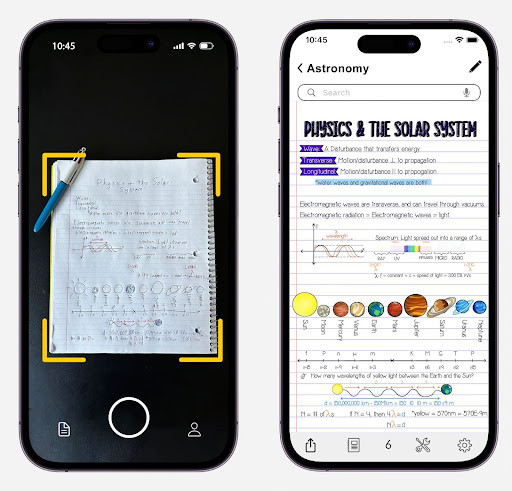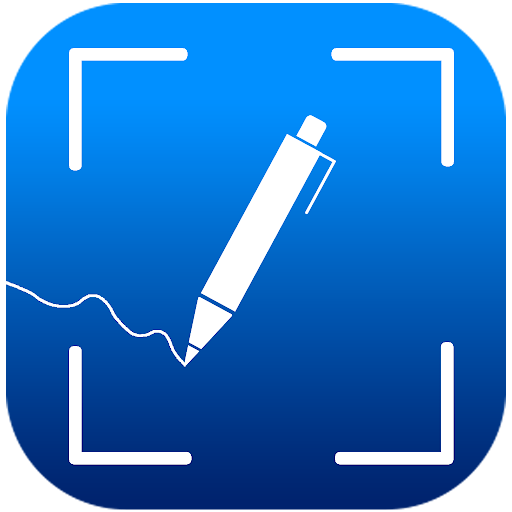NeaterNotes Utilizes AI to Enhance Learning Outcomes While Retaining Traditional Methods

Artificial intelligence (AI) impacts nearly every facet of modern life, from personalized healthcare and predictive analytics to logistics optimization and creative content generation. While growing concerns about AI's impact on education and the potential of negative outcomes have increased, AI's positive potential is also immense in education. It can enable tailored learning paths, automatic grading, and intelligent tutoring systems. NeaterNotes, a new AI-powered platform, emerges to bridge the gap between traditional handwritten note-taking and the demands of modern digital organization.
NeaterNotes is an innovative app that turns handwritten notes into polished, digital versions. It doesn't matter how messy, unstructured, or illegible. NeaterNotes maintains the authentic look and feel of handwriting while incorporating the functionality of digital documents. With a mission to empower students and lifelong learners, it combines the benefits of traditional pen-and-paper methods with the digital advantages of organization, searchability, and collaboration.
This mission stems from the academic journey of Zavier Smith, founder and CEO. He developed the platform after struggling with the same frustrating gaps in note-taking that many experience. From illegible handwriting and disorganized pages to the inability to effectively review old material, Smith noticed how the disconnect between handwritten and digital workflows impedes learning.
Smith realized these issues were systemic after speaking with educators and peers across universities. He learned that, like him, many find it challenging to retain and organize information effectively. Consequently, educators were noticing drops in classroom engagement and academic preparedness, increasingly after the COVID-19 pandemic.
The founder also observed the changes in the educational environment. Firstly, the aftermath of the pandemic significantly disrupted the learning ecosystem. Smith believes virtual learning might have lowered standards across the board as students and educators adjusted to less rigorous expectations. Many of those lowered standards might have persisted even after a return to in-person instruction.

Secondly, Smith has seen a generational shift in how students approach learning. "The current generation of college students has grown up easily accessing tools like large language models," he says. "AI can definitely be used constructively. The problem is that many students have leaned on it as a shortcut."
These shortcuts pertain to outsourcing essays, avoiding critical thinking tasks, and de-prioritizing skills like organization and synthesis. "One professor told me that many students no longer develop the 'academic muscle memory' they need for long-term retention and success," Smith adds.
Thirdly, note-taking tools themselves have become a double-edged sword. Yes, digital devices that can be used for note-taking, like laptops, tablets, and smartphones, promise efficiency. However, as studies show, they also increase distraction and create an illusion of productivity. These tools offer flexibility. However, their misuse leads students to disengage, relying on passive transcription instead of actively participating in class. This problem has only worsened with the advent of fully automated note-taking tools.
It's also worth noting that typing notes can lower retention compared to handwritten methods. However, the problem with the latter is that they can be messy, disorganized, and hard to manage at scale. "Think of how many students take unstructured, chaotic notes without subject labels or dates. You have a recipe for confusion, missed content, and academic underperformance," Smith states.

NeaterNotes can address these challenges. It allows students to write notes by hand, preserving memory-boosting benefits while gaining the digital advantages of organization, legibility, and searchability. "It offers the best of both worlds," says Smith. Users only need to scan handwritten pages. NeaterNotes utilizes advanced optical recognition models to transform them into customizable, aesthetically appealing, editable, and searchable notes.
NeaterNotes employs a proprietary AI called Optical General Recognition (OGR). OGR intelligently detects structural formatting, such as headers, highlights, and diagrams, and preserves the spatial layout of the original notes. Users can highlight, categorize, color-code, and annotate, customizing the aesthetic to suit their learning preferences and enhance memorization.
The platform can be revolutionary for disorganized note-takers. A student who once lost track of which topic was written where can now find a specific phrase or concept using the app's search function. NeaterNotes can index original notes even if they're scattered across subjects. Moreover, thanks to built-in editing, users can format and reorganize their notes post-scan, reposition sections, adjust layouts, and improve visual clarity easily.
This refined approach to note-taking is essential at a critical time for education technology. A 2023 Pew Research Center study found that one in four K-12 teachers believe AI tools do more harm than good in the classroom. Smith aims to navigate this tension with NeaterNotes through a product design philosophy counter to many AI tools by enhancing traditional methods, as opposed to replacing them.
"A tool isn't inherently good or evil. It's how it's used," Smith states. Through NeaterNotes, he intends to encourage better note-taking habits and organizational skills. It doesn't leverage AI to generate content or take notes for students. The platform integrates features like searchable text, editable content, and easy sharing while preserving the benefits of handwritten notes.
NeaterNotes empowers users to engage as they learn. It respects the proven benefits of analog while meeting the expectations of a generation raised on digital. Smith and his team look forward to adding more features to the app to further bridge traditional and modern learning. Upcoming additions include diagram and graph recognition, collaboration spaces, and flashcard integration, among many others.
© Copyright IBTimes 2025. All rights reserved.



















